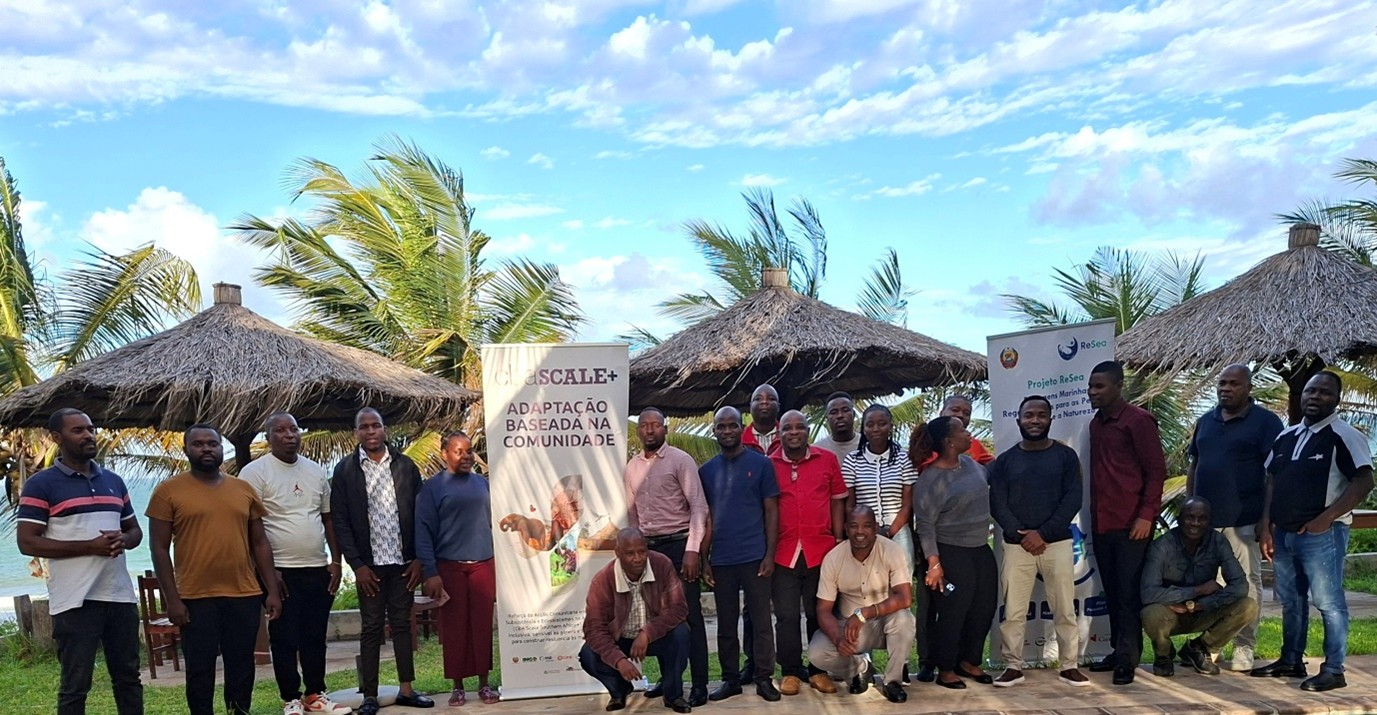Chagas disease, long considered only a threat abroad, is established in California and the Southern U.S. – Los Angeles Times

Report on Chagas Disease in the United States and its Alignment with Sustainable Development Goals
Introduction: A Neglected Public Health Issue and SDG 3
Chagas disease, caused by the parasite Trypanosoma cruzi, represents a significant and often overlooked public health challenge within the United States. This condition directly impacts the achievement of Sustainable Development Goal 3 (Good Health and Well-being), particularly Target 3.3, which aims to end the epidemics of neglected tropical diseases by 2030. An estimated 300,000 individuals in the U.S. are infected, with the majority unaware of their condition due to the disease’s long dormant period. The chronic phase can lead to severe cardiac or gastrointestinal complications, resulting in sudden death and undermining public health security.
Epidemiological Status in the United States
A coalition of epidemiologists and medical professionals is advocating for the World Health Organization (WHO) and the Centers for Disease Control and Prevention (CDC) to classify Chagas disease as endemic in the United States. Such a designation would facilitate greater awareness, education, and public health investment.
- Prevalence: The disease is present in 30 U.S. states, with an estimated 300,000 infected individuals nationwide.
- Mortality: In Latin America, Chagas disease causes more fatalities annually than malaria.
- State-Specific Data: California has the highest estimated number of cases, ranging from 70,000 to 100,000 individuals. This is attributed to both immigration from endemic regions and local transmission.
- Local Transmission: Cases of locally acquired infections have been documented, including in affluent areas like the Hollywood Hills, challenging the misconception that the disease is confined to specific demographics.
Transmission, Environmental Factors, and SDG 15
The transmission cycle of Chagas disease is intricately linked to local ecosystems, highlighting the importance of a “One Health” approach that aligns with Sustainable Development Goal 15 (Life on Land). Understanding and managing the terrestrial ecosystems where vectors and reservoirs thrive is critical for disease control.
- Vector: The parasite is transmitted by bloodsucking insects known as kissing bugs (Triatominae). Four of the twelve U.S. species are found in California.
- Parasite Presence: Studies have shown significant parasite prevalence in local vector populations, with approximately one-third of kissing bugs in Los Angeles’ Griffith Park carrying T. cruzi.
- Wildlife Reservoirs: The parasite maintains a large reservoir in local wildlife, complicating eradication efforts. Infected animals in California include:
- Wood rats
- Skunks
- Mice
- Bats
- Raccoons
- Black bears
- Animal Health: The disease also affects domestic animals, particularly canines, which can suffer from acute heart failure and serve as sentinels for human risk.
Challenges in Surveillance and Health Inequalities (SDG 10)
Systemic failures in disease surveillance and diagnosis perpetuate health disparities, a key concern of Sustainable Development Goal 10 (Reduced Inequalities). The stigma associating Chagas with impoverished, migrant communities has led to its neglect within the broader U.S. healthcare system, resulting in unequal access to diagnosis and care.
- Underreporting: Chagas is not a mandatory reportable disease at the state level in California (though it is in Los Angeles and San Diego counties), leading to a lack of comprehensive data and active surveillance.
- Underdiagnosis: The absence of routine screening means most infections are discovered incidentally, often through blood donation screenings. Symptoms of chronic Chagas, such as heart arrhythmia or stroke, are frequently misattributed to other cardiac conditions.
- Diagnostic Gaps: Confirmed cases are believed to represent only “the tip of the iceberg” due to the lack of a standardized reporting system.
Clinical Impact and Recommendations for Action
The clinical and economic burden of untreated Chagas disease is substantial. Early detection and treatment with anti-parasitic medications can cure the infection and prevent progression to the chronic, life-threatening stage. Failure to address the disease leads to costly and complex medical interventions, such as organ transplants and surgery.
Recommendations
- Enhance Surveillance: Implement a standardized, nationwide reporting system for Chagas disease to accurately assess its prevalence and monitor transmission trends.
- Increase Awareness: Launch public health campaigns to educate both the public and medical professionals about the risks, symptoms, and local presence of Chagas disease, thereby reducing stigma and improving early diagnosis.
- Promote Screening: Develop and implement targeted screening protocols for at-risk populations and for patients presenting with unexplained cardiac or gastrointestinal symptoms.
- Invest in Research: Allocate funding for research into local transmission dynamics, vector control strategies, and improved diagnostic tools to support the goals of SDG 3.
Analysis of Sustainable Development Goals (SDGs) in the Article
1. Which SDGs are addressed or connected to the issues highlighted in the article?
- SDG 3: Good Health and Well-being
- SDG 10: Reduced Inequalities
- SDG 15: Life on Land
2. What specific targets under those SDGs can be identified based on the article’s content?
-
SDG 3: Good Health and Well-being
-
Target 3.3: End the epidemics of… neglected tropical diseases… and other communicable diseases.
The article focuses entirely on Chagas, which is a neglected tropical disease. The call by epidemiologists for the WHO and CDC “to label the disease as endemic” is a direct effort to bring attention and resources to combat this communicable disease. The text states, “This is a disease that has been neglected and has been impacting Latin Americans for many decades,” clearly aligning with the goal of addressing neglected diseases.
-
Target 3.4: Reduce by one third premature mortality from non-communicable diseases through prevention and treatment.
Although Chagas is a communicable disease, its chronic effects manifest as non-communicable diseases. The article notes that the illness can lead to “heart attack, stroke or death” and that its symptoms are “often indistinguishable from other forms of cardiac and organ damage.” The cardiologist in the article states, “If we screened for it and caught it early, most patients could be cured,” which directly speaks to preventing premature mortality through early prevention and treatment.
-
Target 3.d: Strengthen the capacity… for early warning, risk reduction and management of national and global health risks.
The article highlights a significant gap in public health infrastructure. It points out that “Chagas is not a reportable disease in California” at the state level and that “There’s no standardized reporting system. There’s no active surveillance.” The efforts in Los Angeles and San Diego counties to make it reportable, and the overall call for more awareness and investment, are aimed at strengthening the capacity to manage this national health risk.
-
Target 3.3: End the epidemics of… neglected tropical diseases… and other communicable diseases.
-
SDG 10: Reduced Inequalities
-
Target 10.2: Empower and promote the social, economic and political inclusion of all, irrespective of… origin… or other status.
The article explicitly mentions that the disease carries a “stigma, falsely associated with poor, rural migrants from bug-infected homes in far-off tropical nations.” It also quotes an expert saying, “This is a disease that has been neglected and has been impacting Latin Americans for many decades.” This points to an inequality in health awareness, research, and public health response that has disproportionately affected a specific population based on origin and socioeconomic status.
-
Target 10.2: Empower and promote the social, economic and political inclusion of all, irrespective of… origin… or other status.
-
SDG 15: Life on Land
-
Target 15.1: Ensure the conservation, restoration and sustainable use of terrestrial and inland freshwater ecosystems and their services.
The article establishes a clear link between the disease and local ecosystems. It notes that the parasite-carrying “kissing bug” is prevalent in areas like “Los Angeles’ Griffith Park” and that the parasite has been “detected in local wildlife, including wood rats, skunks and mice… as well as bats, raccoons and black bears.” This demonstrates that the disease reservoir exists within the local terrestrial ecosystem, making the management and understanding of these ecosystems crucial for public health.
-
Target 15.1: Ensure the conservation, restoration and sustainable use of terrestrial and inland freshwater ecosystems and their services.
3. Are there any indicators mentioned or implied in the article that can be used to measure progress towards the identified targets?
-
For Target 3.3 (End epidemics of neglected tropical diseases)
-
Indicator: Number of people requiring interventions against neglected tropical diseases (Official Indicator 3.3.5).
The article provides specific estimates that can serve as a baseline for this indicator: “roughly 300,000 people in the U.S. currently have it” and “California has the largest number of people in the U.S. infected with Chagas disease — between 70,000 and 100,000.” Tracking these numbers over time would measure progress.
-
Indicator: Number of people requiring interventions against neglected tropical diseases (Official Indicator 3.3.5).
-
For Target 3.d (Strengthen capacity for health risk management)
-
Implied Indicator: Existence of a standardized national reporting and active surveillance system for Chagas disease.
The article directly states, “There’s no standardized reporting system. There’s no active surveillance.” Therefore, the establishment of such a system would be a clear and measurable indicator of progress. The article also notes that the disease is reportable in some counties but not at the state level in California, providing a specific metric for expansion of surveillance.
-
Implied Indicator: Existence of a standardized national reporting and active surveillance system for Chagas disease.
-
For Target 15.1 (Ensure conservation of terrestrial ecosystems)
-
Implied Indicator: Prevalence of the Trypanosoma cruzi parasite in local vector and wildlife populations.
The article mentions specific research data: “in some places, such as Los Angeles’ Griffith Park, about a third of all kissing bugs harbor the Chagas parasite.” This percentage serves as a measurable indicator. Monitoring the prevalence of the parasite in kissing bugs and in wildlife reservoirs (wood rats, skunks, etc.) over time would indicate the level of environmental risk and the effectiveness of any ecosystem-based interventions.
-
Implied Indicator: Prevalence of the Trypanosoma cruzi parasite in local vector and wildlife populations.
4. Table of SDGs, Targets, and Indicators
| SDGs | Targets | Indicators |
|---|---|---|
| SDG 3: Good Health and Well-being |
3.3: End the epidemics of… neglected tropical diseases… and other communicable diseases.
3.4: Reduce premature mortality from non-communicable diseases through prevention and treatment. 3.d: Strengthen the capacity… for early warning, risk reduction and management of national and global health risks. |
Number of people requiring interventions against neglected tropical diseases: The article estimates 300,000 people in the U.S. and 70,000-100,000 in California are infected.
(Implied) Reduction in Chagas-related cardiac events: The article mentions outcomes like heart attack, stroke, and heart arrhythmia that could be tracked. (Implied) Establishment of a standardized reporting and surveillance system: The article explicitly states that no such system currently exists nationally. |
| SDG 10: Reduced Inequalities | 10.2: Empower and promote the social, economic and political inclusion of all, irrespective of… origin… or other status. | (Implied) Reduction in health disparities for neglected diseases among migrant/Latin American populations: The article highlights the stigma and historical neglect of the disease impacting these groups. Increased awareness and equitable screening would be a measure of progress. |
| SDG 15: Life on Land | 15.1: Ensure the conservation, restoration and sustainable use of terrestrial and inland freshwater ecosystems and their services. | (Implied) Prevalence of the T. cruzi parasite in local vector and wildlife populations: The article cites a study finding that “about a third of all kissing bugs harbor the Chagas parasite” in Griffith Park, providing a baseline for monitoring. |
Source: latimes.com

What is Your Reaction?
 Like
0
Like
0
 Dislike
0
Dislike
0
 Love
0
Love
0
 Funny
0
Funny
0
 Angry
0
Angry
0
 Sad
0
Sad
0
 Wow
0
Wow
0




















































.jpg.webp?itok=0ZsAnae9#)

















:focal(1500,1000)/https://media.globalcitizen.org/a6/9a/a69a4720-d8a1-4715-b596-18738d03c05c/rotary_polio_hero_image.jpg?#)








